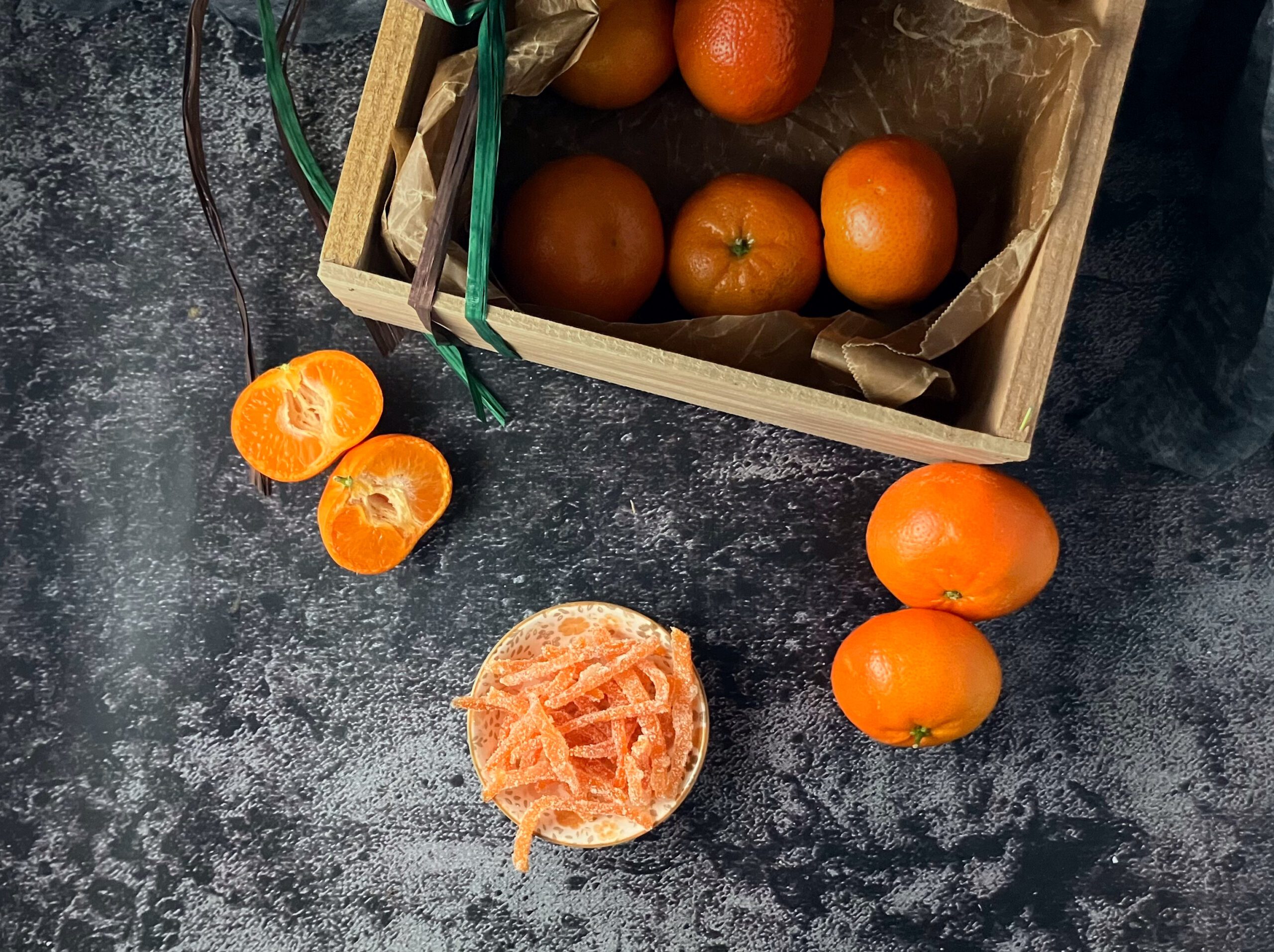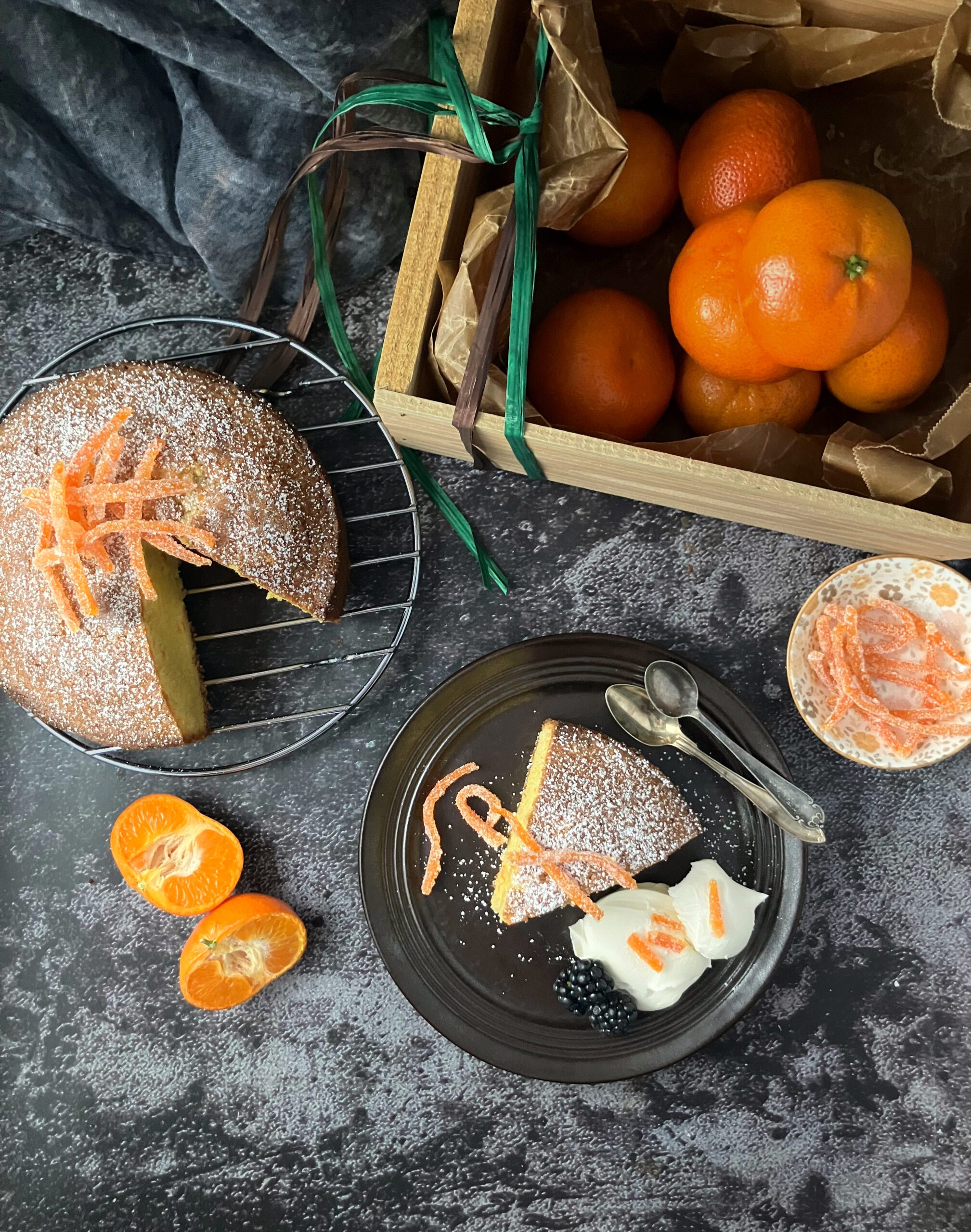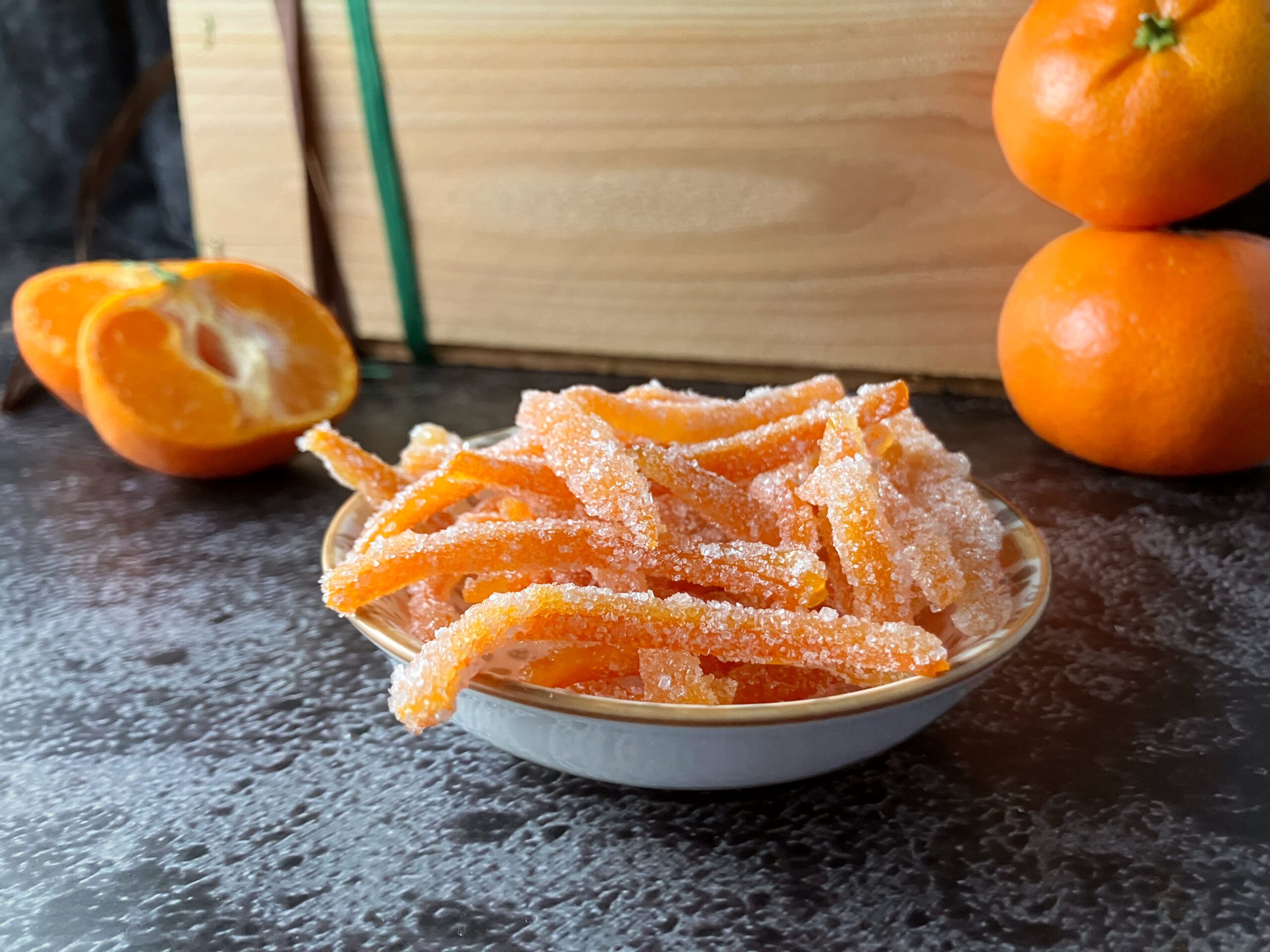Homemade Candied Clementine Peel
Candied clementine peel is a simple, bright, and surprisingly addictive treat. Perfect for decorating cakes, biscuits, or just nibbling on, it’s made with only sugar, water, and clementine peel. A small batch goes a long way, adding sweet, citrusy flair without any artificial nasties.

|
|
| My candied clementine peel |
| How to candy clementine peel |
| Healthier than store-bought |
| Ways to use candied peel |
| How to store citrus peel |
| More simple homemade candy recipes |
My candied clementine peel recipe
Candied clementine peel sounds a little unexpected, but it makes perfect sense. We candy orange peel, so why not its sweeter, fragrant little sibling?
While creating a whole clementine polenta cake, I thought, why not make some sugared peel to go with it? I didn’t think it would be edible. I just thought it would provide a pretty decorative feature. Well, I soon realised how terribly wrong I was. Not only was it edible, it was delicious. So delicious in fact that I had to put it out of my hand’s reach, as I kept nibbling on it as I made the cake.
Soft, bright, and intensely citrusy, it is also gorgeous to look at. With just sugar, water, and peel, it is a fairly simple way to create natural, homemade candy while also reducing food waste.
This recipe makes roughly enough peel from one clementine to decorate a small cake or chopped up and added to a batch of cookies. But of course, you don’t need to stick to just one; make as big a batch as you fancy.
How to candy clementine peel at home
I am no stranger to candying fruit. I sugared my cranberries for my white chocolate Christmas cheesecake. The method is so simple that I am surprised people still buy their own fruit candy.
Candying clementine peel is surprisingly simple, and it transforms a small piece of leftover fruit skin into something sweet, fragrant, and irresistible. All you need are a few basic ingredients: sugar, water, and the peel itself.
The process is gentle and requires a little patience. First, you need to cut the peel up into thin slices. These are then simmered in simple sugar and water syrup until they soften and their colour deepens. Once cooked, the strips are left to dry slightly before being coated in sugar, which gives them that sparkly, sweet finish.
Although there are several steps, and resting time is needed between each of them, it isn’t difficult or laborious. The result is juicy, flavour-intensified homemade candy that is perfect for decorating cakes, adding to biscuits, or just enjoying on their own.
And candied peel isn’t only for clementines. Any citrus fruit would work amazingly well. Think: limes, lemons, or even grapefruit.
Why candied clementine peel is healthier than store-bought
Store-bought candied fruit can be convenient, but it often comes with hidden nasties such artificial colours, preservatives, and extra sugar. Making your own candied clementine peel is refreshingly simple: just peel, sugar, and water. That’s it. No additives, no chemicals, and no unnecessary extras. Okay, there’s sugar involved, so it isn’t healthy, but at least there are no hidden nasties. And just look at that beautiful, natural colour.
Not only do you get a more natural, vibrant flavour, but you also have complete control over the sweetness. The peel itself provides a concentrated citrus taste, meaning you don’t need as much sugar to enjoy its bright flavour. It’s a small step towards cleaner, more wholesome baking, and a delicious way to add a touch of homemade goodness to your cakes, biscuits, or desserts. Or, just eat it as it is. Kids will love it, and they’ll never guess it isn’t shop-bought sweets.
Plus, using fruit peel that would normally go to waste makes this treat both delicious and eco-friendly, a small but meaningful way to reduce food waste and help the planet.
Ways to use candied peel in baking and desserts
Candied clementine peel is surprisingly versatile. I originally made mine to garnish an orange polenta cake, and it worked beautifully. Once you’ve made a batch, here are a few more ideas to enjoy it:
- Cake and dessert decoration: lay strips on top of citrus cakes, polenta cakes, cheesecakes, or tarts for a bright, sparkly finish. Perfect for adding a festive touch to Christmas baking.
- Baking mix-ins: chop into small pieces and fold into cookies, muffins, scones, or bread for bursts of sweet citrus flavour.
- Chocolate treats: dip the strips in dark or milk chocolate for an easy homemade confection.
- Garnish for drinks: add a strip to cocktails, mocktails, or hot chocolate for a fragrant twist.
- Snack straight from the jar: they’re addictive, so don’t be surprised if half disappear before making it onto anything else!
How to store citrus peel and how long it lasts
Candied clementine peel is best stored in an airtight container at room temperature. Keep it in a cool, dry spot away from direct sunlight: this helps prevent the sugar coating from dissolving too quickly.
Because the sugar can attract moisture, the peel is best enjoyed within 5–7 days. If you want to keep it longer, you can freeze it in a sealed bag for up to a month. Just let it thaw fully before using.
For the best texture and sparkle, it’s ideal to add the peel to cakes, cookies, or other treats shortly after making it rather than storing for extended periods.
Candied Clementine Peel
Ingredients
- 70g (⅓ cup) sugar (divided)
- 40ml (⅛ cup) water
- the peel of one clementine (sliced in strips)
Instructions
Candied Clementine Peel:
- Gently peel off the skin and remove the pith with a sharp knife.
- Cut into strips (it doesn’t matter how long they are, but don’t make them too thick).
- Heat half of the sugar and water together until the sugar melts.
- Add the clementine strips to the boiling mixture and give them a stir so that they have a good covering.
- Leave them to cook on a fairly low heat for around 15 minutes until most of the liquid has dissolved and the strands have softened and increased in colour.
- Using tongs, separate each strand and place on a wire rack. Leave them for around one hour.
- Place the rest of the sugar in a bowl and add the strands, making sure they are all covered in sugar.
- Once more, place them on a rack and leave them to set for a couple of hours.
Notes







